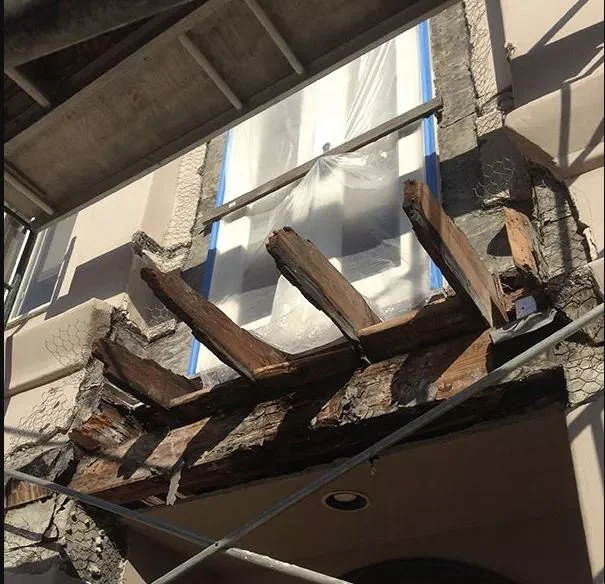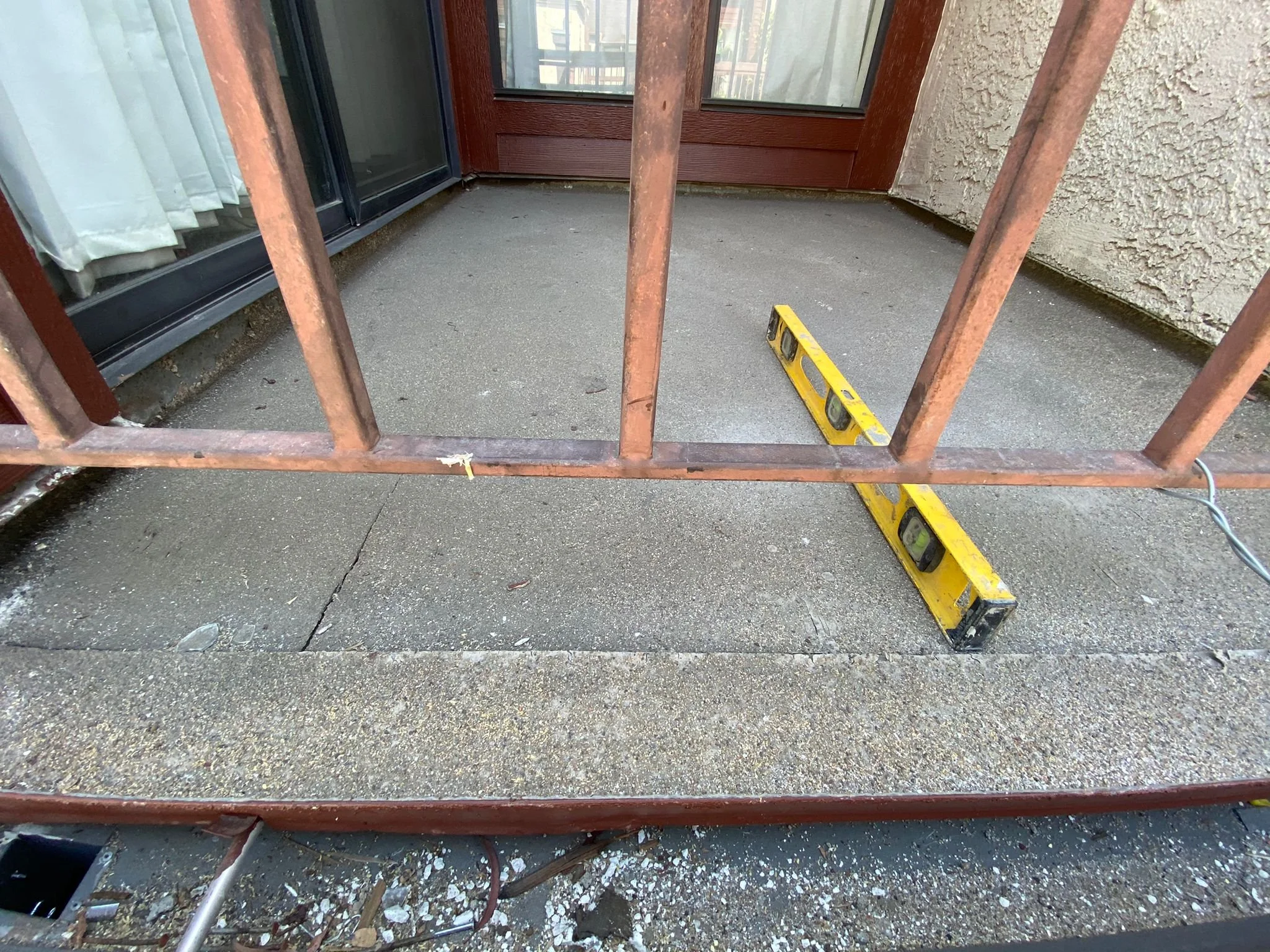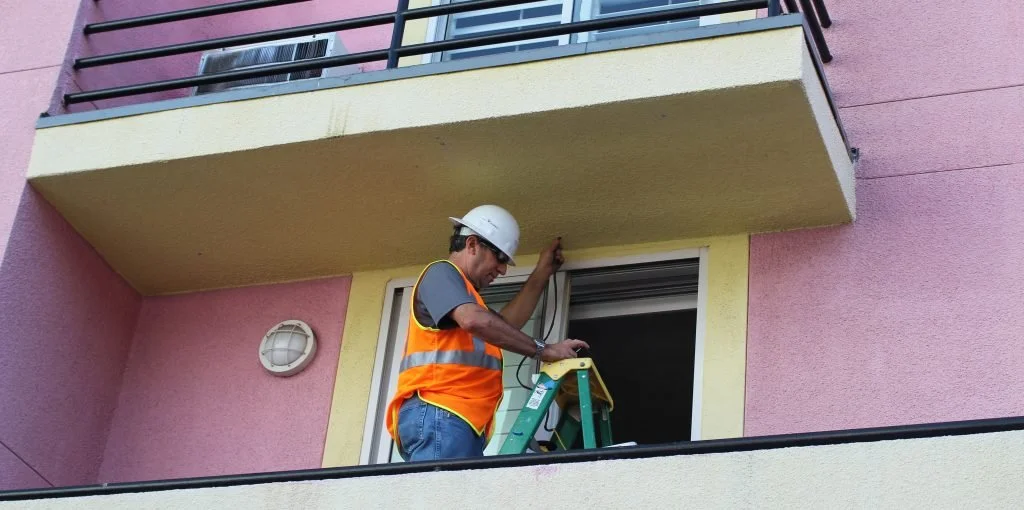SB326-SB 721 Balcony, Decks, and Elevated Walkway Inspections
Since 1679, buildings have had appendages implemented in their designs known as balconies and in the 20th century, the exterior deck was created. Since then, there has been a multitude of variations and permutations of size, scale, and material improvements, but one universal fact remains the same. All types require periodic inspection and maintenance of their deck surfaces, structural members, contiguous building systems, and other related elements. When buildings lack these preventative measures, they open the door to prolonged water intrusion and ultimately catastrophic failure.
At least, that is what happened in one case at the 5th floor of an apartment building at 2020 Kittredge Street in Berkeley. Wherein, the wood floor framing of a 5th floor balcony failed to support 13 students. It was later determined that the failure was caused by wood dry rot of the wood floor framing. Dry rot is wood decay caused by one of several species of fungi that digest parts of the wood which give the wood strength and stiffness, effectively removing the structural capacity of the lumber and its ability to resist loads or in this case; support 13 students. The lack of inspection and maintenance of the balcony by qualified individuals resulted in this catastrophic failure.
As we work closely with Home Owners, HOA’s and Management Companies, we begin to understand how easy it is for the inspection and maintenance of these elevated platforms to slip through their radar. The typical HOA and or management company is looking to reduce costs where possible and accumulate a reserve of funds to tackle periodic large improvements that are necessary for a multi-unit building (i.e. roof replacement work, stucco crack repair and painting work, & etc. Unfortunately, most of managing parties of these entities don’t understand construction, construction detailing and the lifespan of certain construction materials and or systems, so they typically wait until a problem becomes highly evident or visible in the form of visual signs of water intrusion, cracking or deflection of building materials and by that time a far more expensive restoration process is typically required.
The state of California has since passed several assembly bills requiring all small and larger scale multifamily developments with balconies, decks and other elevated platforms managed by HOA/Management companies to be inspected for possible water intrusion and visible signs of damage that could be possible to the existing floor framing of the elevated platforms.
All balconies in California must be inspected thoroughly each year in order to verify the existing systems are structurally intact and do not show signs of dry rot, termite damage & etc. Should the structural framing be deemed non-safe for habitability, it is the Unit Owners and HOA’s responsibility to prohibit access to those areas immediately and retain a qualified General Contractor/ Water Damage Restoration Company to review and replace any damaged framing as well as waterproof and seal the appropriate areas to stop from further future water intrusion.
It has been our experience and so we recommend selecting a General Contractor/Water Damage Restoration company that is knowledgeable in all aspects of construction, understands how the building materials and systems function and have expert experience waterproofing various building assembly types. The best resource is a construction company who can do all of the above in house. This will assure all the work required to be completed is managed and completed properly by one competent contracting party at each stage of material application/installation.
We have had the pleasure of working with a local company that was able to bring this level of competence, experience and management to the table: Gaveet Waterproofing & Restoration. Gaveet does an excellent job at all water related damage and restoration. They have helped our clients save several of their assets ranging from various sizes of Residential and Commercial properties. They generally will provide the inspections for the decks & etc. and complete the Restoration work in 2 phases allowing for the work to be completed in a rapid manner.
Additional General Contractors/Waterproofing companies and further information will be added to this thread once contractors are vetted by our team wherein a list will be created below.
#1 Gaveet Waterproofing & Restoration located in Glendale, CA O: 818 426 5331
#2 A & E Waterproofing located in Glendale, CA O: 818 489 6268




